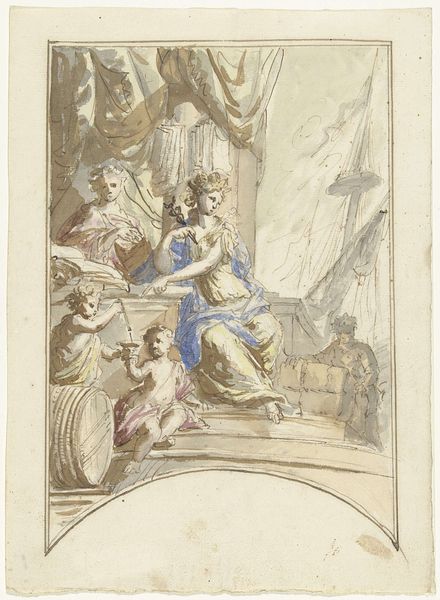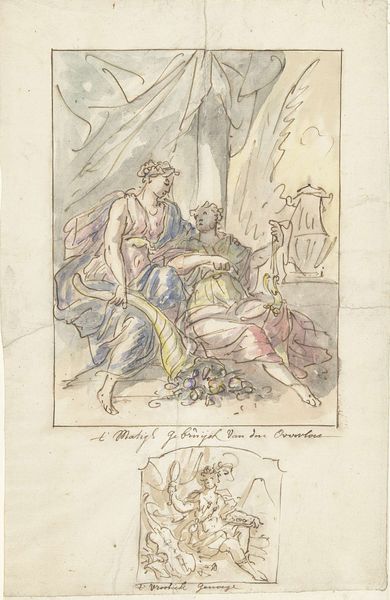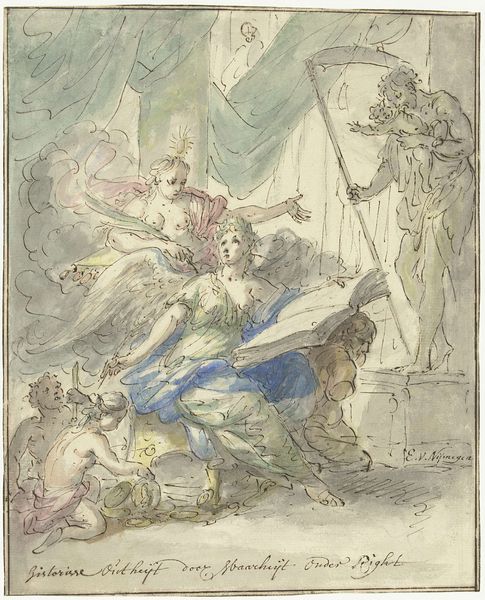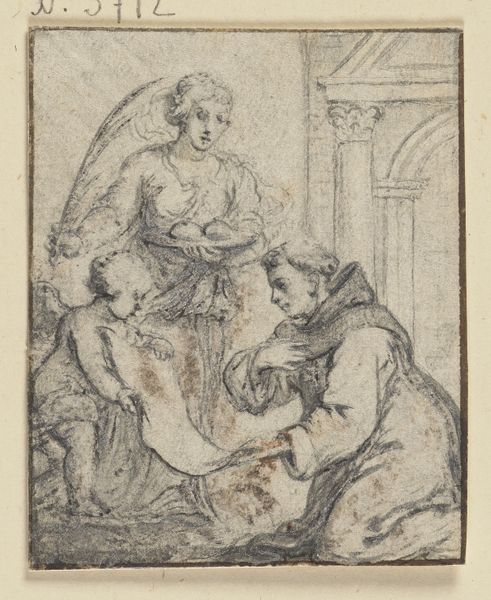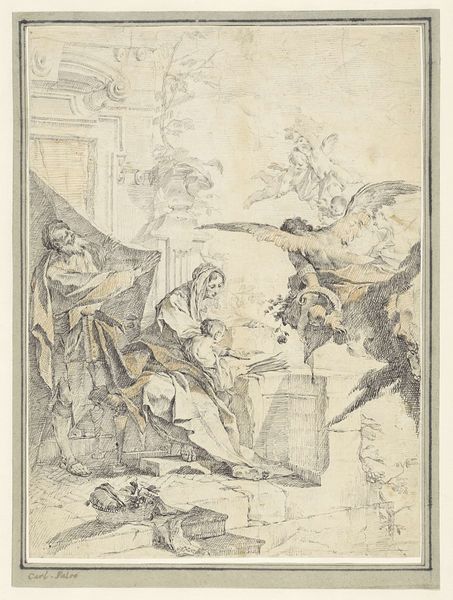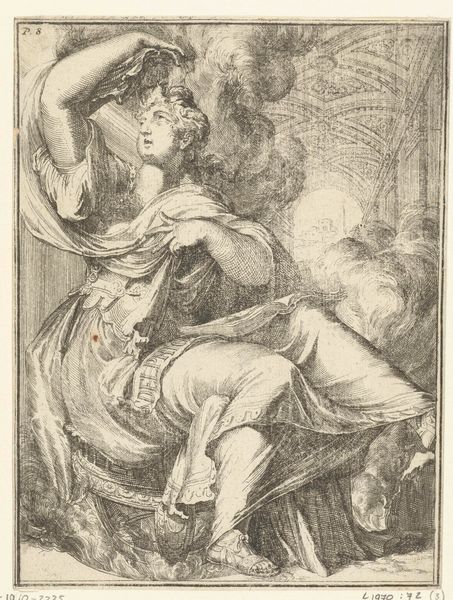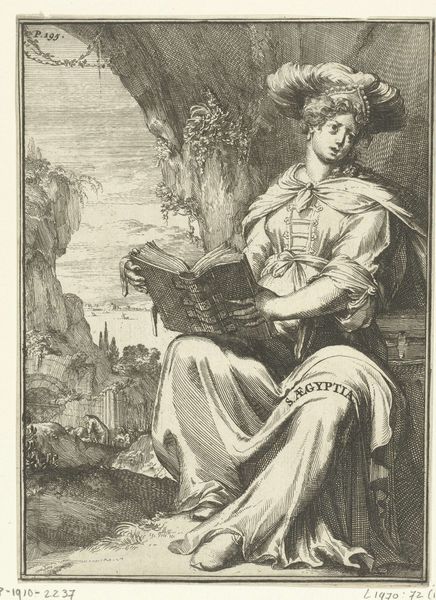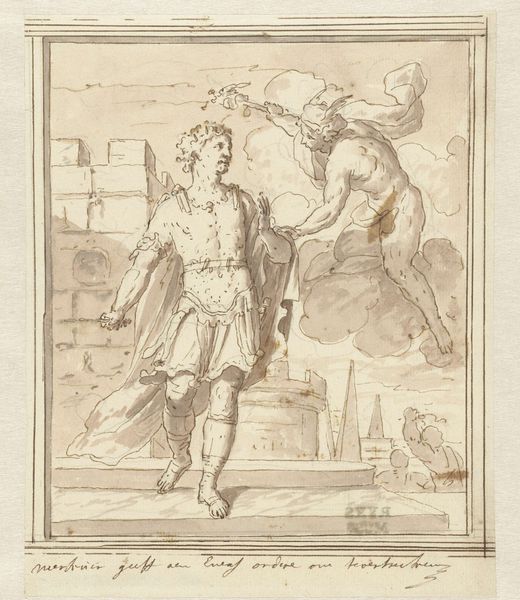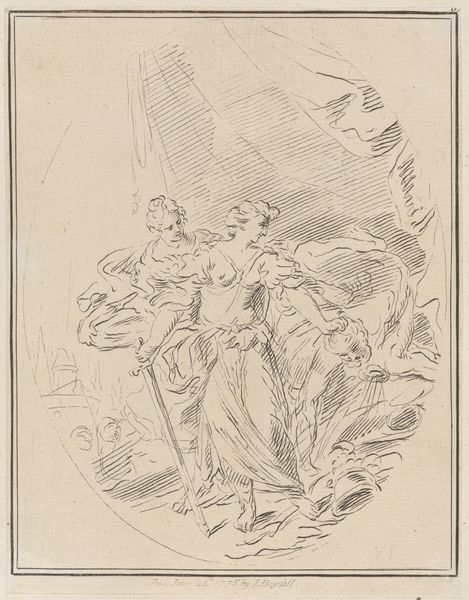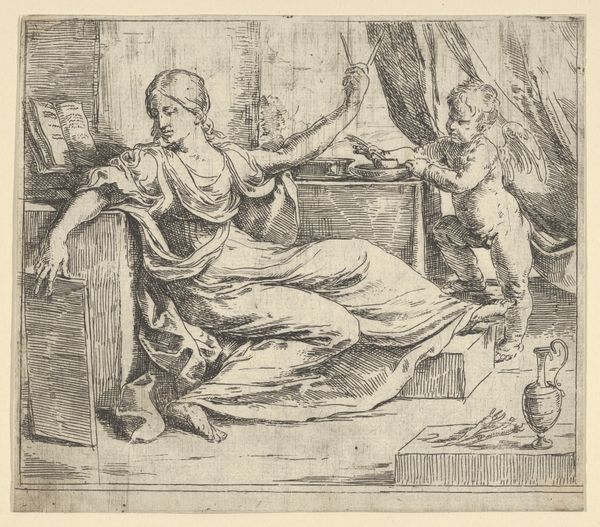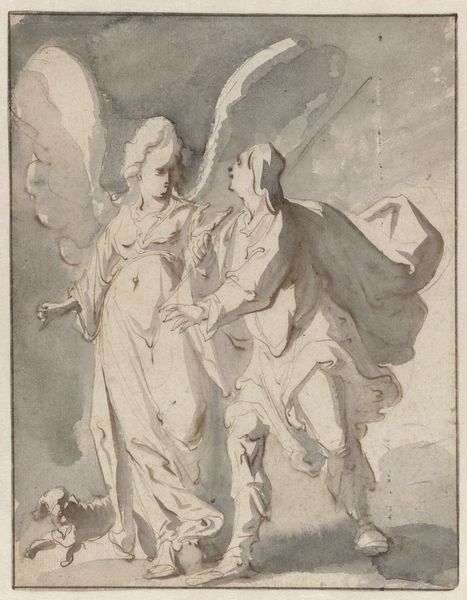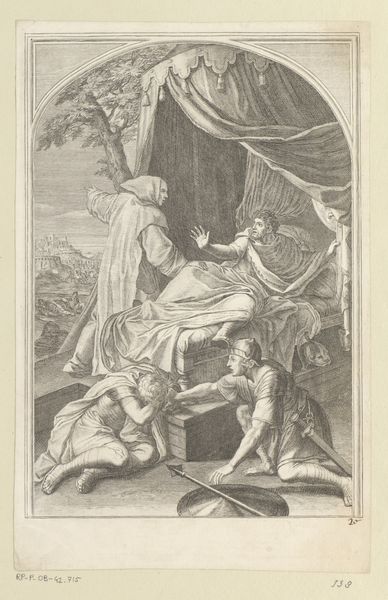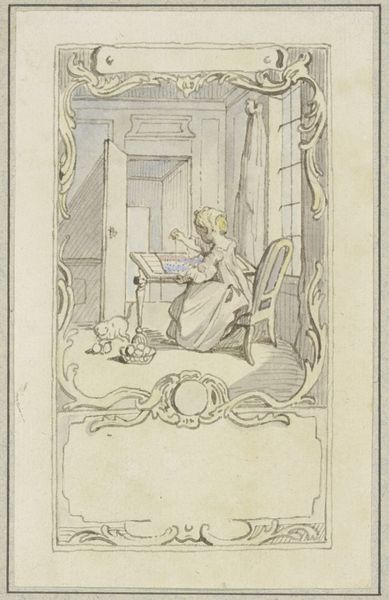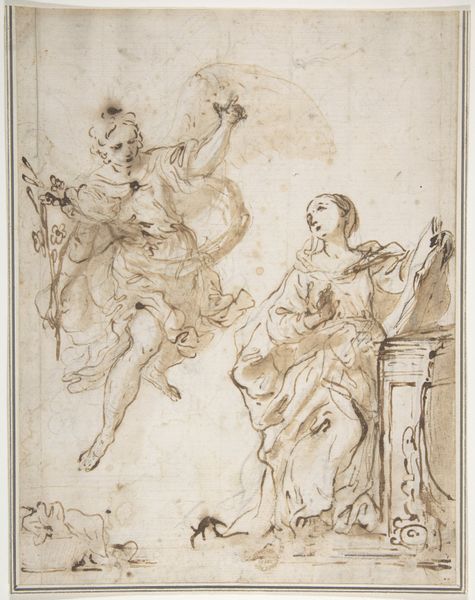
drawing, watercolor
#
drawing
#
imaginative character sketch
#
toned paper
#
light pencil work
#
quirky sketch
#
allegory
#
baroque
#
pencil sketch
#
figuration
#
personal sketchbook
#
watercolor
#
sketchbook drawing
#
watercolour illustration
#
storyboard and sketchbook work
#
sketchbook art
Dimensions: height 330 mm, width 210 mm
Copyright: Rijks Museum: Open Domain
Curator: This is Elias van Nijmegen's "Historie," a drawing likely made sometime between 1677 and 1755. It employs watercolor and pencil on toned paper. What catches your eye first? Editor: There's a definite dynamism to it! The figure's pose and the flowing drapery create a sense of movement, but it’s tempered by what seems to be unfinished areas. It gives it the air of a working sketch rather than a highly polished piece. Curator: Absolutely. Considering Van Nijmegen's historical context, this allegorical approach aligns with the baroque sensibilities and the prevalent tradition of history painting. This depiction likely references Clio, the muse of history. Her image here connects the writing of history with divine inspiration and the classical world. Editor: Interesting. I see that now in the use of the quill and the column behind her. The paper and pigments he chose suggest a relatively accessible and mobile form of knowledge production. Was he making preliminary sketches, perhaps for a larger commission? Curator: Precisely! His technique reveals a fluidity that connects artistic practice to social and political forces that championed empirical observation. The Enlightenment was taking hold during this time. It challenged long-held, static beliefs and embraced human agency. The sketchbook nature of it is compelling. It acts as a document of knowledge formation, which feels radical. Editor: The materiality and portability make that clear. I keep noticing the small figure crouching in the lower right, almost hidden in the shadow. He looks almost like an imp. What might he signify? Curator: He's quite intriguing. Perhaps he's the embodiment of oral history and myth, always present and influencing formal narratives? Or possibly skepticism, or simply an acknowledgement of biased perspectives present when documenting. The muted palette softens the didactic edge a piece like this might possess. It creates a complex understanding of "history" that isn't just declarative. Editor: So the artist is inviting doubt and interpretation rather than presenting one reading? I do love those ambiguous figures in artworks. Thank you, I never thought about history as material that could be consumed, disseminated, carried! Curator: It reminds us that art is always situated in historical context and speaks to the forces shaping it.
Comments
No comments
Be the first to comment and join the conversation on the ultimate creative platform.
